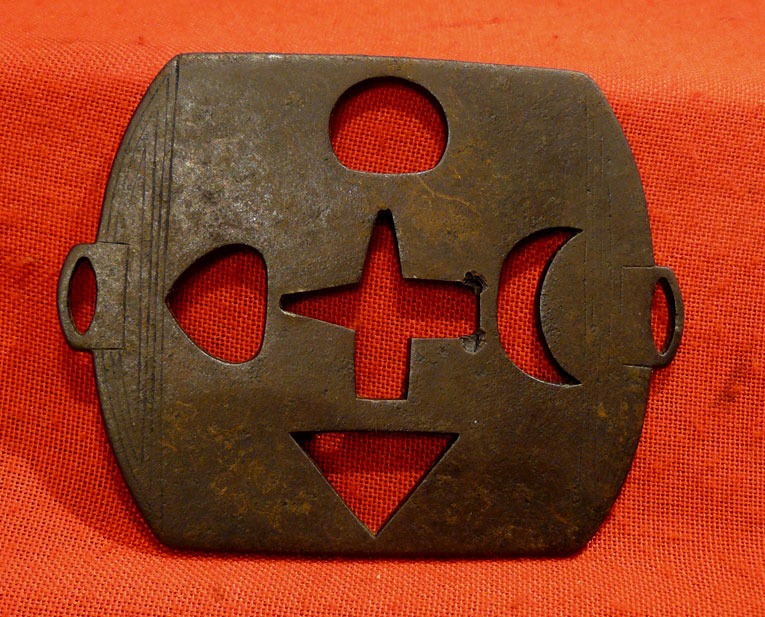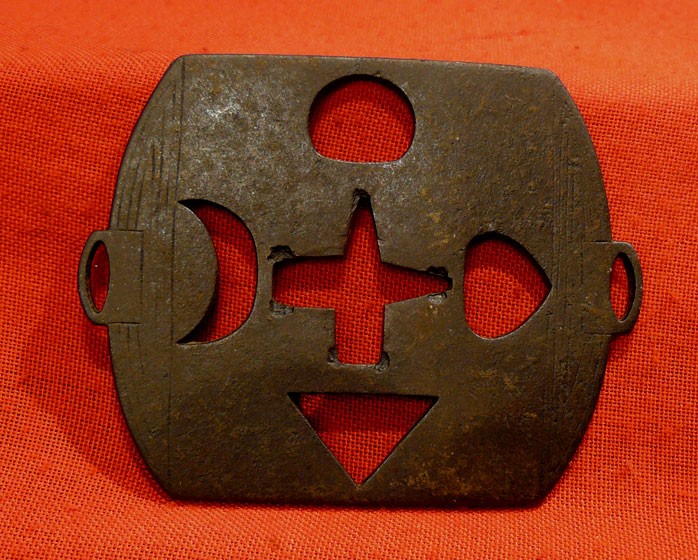A Most Unusual & Rare Edo Period Katana Tsuba, With Rotational Fitting. This is An Incdibly Rare Form of Tsuba in that it Has Two Methods To Mount It On Katana. Vertical or Horizontal
An iron sukashi tsuba, cut with four different shaped symbols as kozuka-ana and kogai-ana, and two, North and South, or East and West facing blade apertures, to enable the rotation of the tsuba when mounting it onto the blade. Thus altering the profile of the tsuka from wide to narrow.
The tsuba is always usually a round, ovoid or occasionally squarish guard at the end of the tsuka of bladed Japanese weapons but always usually designed to be worn one way upon the sword, either the katana and its various declinations, tachi, wakizashi, tanto, and polearms that have a tsuba, such as naginata etc.
They contribute to the balance of the weapon and to the protection of the hand. The tsuba was mostly meant to be used to prevent the hand from sliding onto the blade during thrusts as opposed to protecting from an opponent's blade. The chudan no kamae guard is determined by the tsuba and the curvature of the blade. The diameter of the average katana tsuba is 7.58 centimetres (3.0-3.1 in), wakizashi tsuba is (2.4-2.6 in), and tanto tsuba is 4.5-6 cm (1.8-2.4 in).
During the Muromachi period (1333-1573) and the Momoyama period (1573-1603) Tsuba were more for functionality than for decoration, being made of stronger metals and designs. During the Edo period (1603-1868) tsuba became more ornamental and made of less practical metals such as gold.
Tsuba are usually finely decorated, and are highly desirable collectors' items in their own right. Tsuba were made by whole dynasties of craftsmen whose only craft was making tsuba. They were usually lavishly decorated. In addition to being collectors items, they were often used as heirlooms, passed from one generation to the next. Japanese families with samurai roots sometimes have their family crest (mon) crafted onto a tsuba. Tsuba can be found in a variety of metals and alloys, including iron, steel, brass, copper and shakudo. In a duel, two participants may lock their katana together at the point of the tsuba and push, trying to gain a better position from which to strike the other down. This is known as tsubazeriai pushing tsuba against each other.
Code: 16704
585.00 GBP


